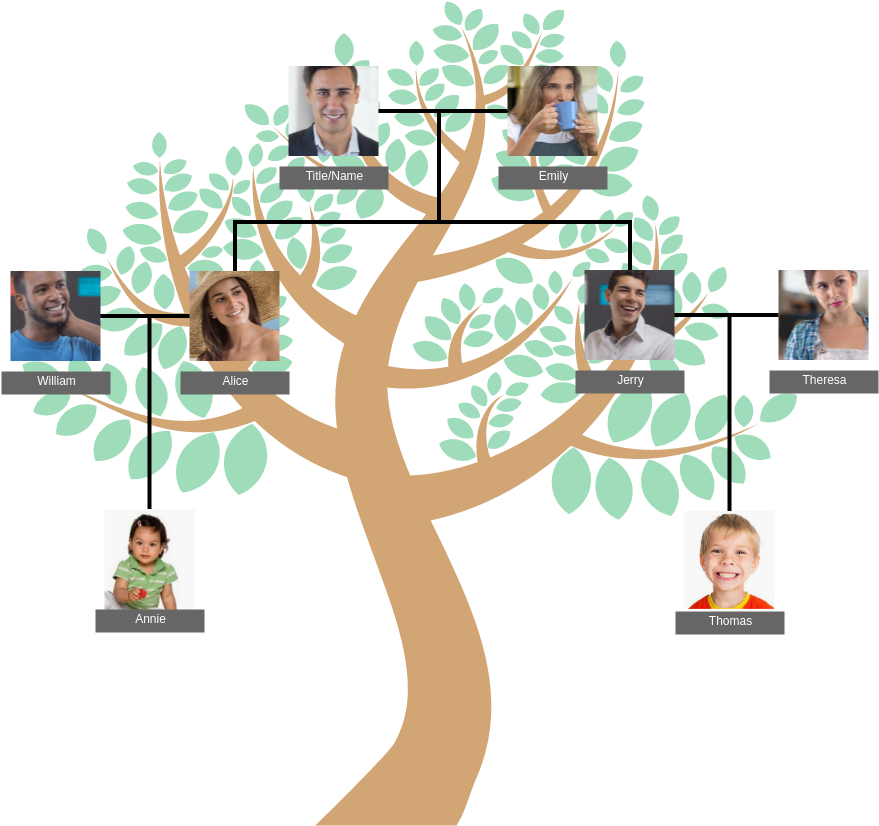My Geek Score: Finding your family tree is an exciting and insightful journey into your ancestry and heritage. Many people embark on this quest to discover where they come from, to better understand their cultural background, or to trace their lineage for medical or legal purposes. With the advancements in genealogical research tools and technology, locating your family tree has become more accessible and straightforward. This article will guide you through what a family tree is, the features and benefits of knowing your family tree, how to find it, and some troubleshooting tips to help you along the way.
What is a Family Tree?
A family tree is a visual representation of your lineage, showing the relationships between different members of your family across generations. It typically begins with you and branches out to include your parents, grandparents, great-grandparents, and so on. It illustrates familial ties, often in a graphical or diagrammatic format, and is also referred to as a genealogical chart. This chart can span several generations, sometimes going back centuries, depending on how far back the research has been completed.
In addition to showing relationships, a family tree can also provide key historical information about your ancestors, such as birth and death dates, places of birth, marriages, occupations, and other relevant details that can help you connect with your family’s history. For some, creating a family tree is a way to preserve family stories and traditions for future generations.
Features and Benefits of Knowing Your Family Tree
1. Personal Understanding
One of the most significant advantages of discovering your family tree is the personal understanding it provides. It allows you to learn more about where you come from, who your ancestors were, and how they lived. You may uncover unique and interesting aspects of your heritage that provide you with a sense of pride and connection to your past.
2. Health Insights
Many people search for their family tree to learn more about genetic predispositions and hereditary conditions. Knowing your family’s medical history can give you valuable information that could help in making informed decisions regarding your health and well-being. For example, learning about inherited diseases or health conditions that run in your family can guide you in preventative health measures or regular checkups.
3. Cultural Identity
For some individuals, exploring their family tree can be an essential aspect of understanding their cultural identity. It helps people connect with their roots, whether they are seeking to explore their ethnicity, nationality, or other cultural factors. Understanding your family’s migration history can offer a deeper appreciation for your traditions, language, and customs.
4. Building Connections
A family tree also serves as a bridge to reconnect with distant relatives or discover long-lost family members. This could open up opportunities for emotional connections, reunions, and sharing family memories that may have been forgotten over the years.
5. Historical Research
Your family tree offers an excellent starting point for historical research. By learning about the occupations, locations, and events in your ancestors’ lives, you can discover more about historical periods, migration patterns, and even significant historical events that impacted your family.
How to Find Your Family Tree
Finding your family tree involves a combination of research, resources, and tools to trace your ancestry. Here are the steps to get started:
1. Start with What You Know
Before diving into historical records, begin by documenting your immediate family members and any information you already know. Create a basic family tree starting with your name and working backward through your parents, grandparents, and so on. Speak with relatives to gather any details they may have, including names, birth dates, locations, occupations, and any interesting family stories. This foundational knowledge will help you expand your search.
2. Use Genealogy Websites
Today, there are numerous websites that can help you research your family tree. Websites such as Ancestry.com, MyHeritage, and Findmypast offer tools to create family trees, search historical records, and connect with distant relatives. These platforms provide access to census records, immigration records, military documents, and other public archives that can help you track down your ancestors. Some websites offer free trials, while others require a subscription for full access to their records.
3. Consult Public Records
Many records are accessible through national or local archives. For instance, census data, birth and death certificates, marriage records, and immigration documents can all be vital in finding family connections. Many governments now provide digitized versions of these documents online, making it easier for you to conduct research without physically visiting archives.
You can visit local government offices, libraries, or historical societies to access physical records as well. Many large cities and towns maintain genealogical resources and offer help to individuals researching their ancestry.
4. DNA Testing
Genetic testing has become a valuable tool for genealogical research. Services like 23andMe, AncestryDNA, and FamilyTreeDNA offer DNA tests that analyze your genetic makeup to help you trace your ancestry. These tests can provide insights into your ethnic origins and connect you with genetic relatives who may have taken the same test. Many people discover distant cousins or new branches of their family tree through these DNA connections.
However, it’s important to note that while DNA tests can provide valuable information, they might not be able to pinpoint every detail of your family tree. Genetic tests can help confirm or challenge information found through traditional genealogical research but should be used as part of a broader research strategy.
5. Talk to Relatives
Sometimes, the best way to uncover information about your family tree is by talking to older relatives. Grandparents, aunts, uncles, and even cousins may hold vital pieces of family history that are not available in public records or online databases. Record these conversations, as they may contain oral history that has not been documented elsewhere. Photographs, old letters, and family heirlooms can also be excellent clues to deepen your understanding of your ancestry.
6. Join Genealogy Groups
Online forums, genealogy clubs, and local family history societies can be valuable resources when researching your family tree. Other individuals who share your interest in genealogy may offer tips, advice, or even share similar family connections. These groups can be great places to learn new techniques for research and get help if you get stuck.
7. Keep Track of Sources
As you gather information, it is important to keep track of where you found each piece of data. This is crucial for verifying the accuracy of your research and for future reference. Make note of the website, book, or archive where you obtained the information, as well as any document numbers, dates, and page numbers.
Troubleshooting Tips for Genealogical Research
While finding your family tree can be a rewarding experience, it is not always a straightforward process. Here are some troubleshooting tips to help you overcome common obstacles:
1. Verify Information
Sometimes, the information you find online or through family records may not be accurate. People can make mistakes when transcribing or recording names, dates, or locations. Always cross-check multiple sources to ensure the accuracy of your findings.
2. Be Persistent
Genealogical research can be time-consuming, especially when you are dealing with incomplete records or unclear family histories. Don’t get discouraged if you hit a dead end. Instead, take a break and return to the task later with fresh eyes. Persistence is key to making progress in your search.
3. Consider Name Variations
In older records, names were often spelled in different ways, or they might have changed over time. If you encounter difficulties finding a particular ancestor, try searching with alternative spellings or variations of their name. This is especially common with names of immigrants, where names were altered to fit the local language or culture.
4. Explore Other Records
If you’re stuck finding records on one branch of your family, try exploring other types of records, such as wills, land deeds, military service records, or even local newspapers. Sometimes, these records provide clues that aren’t found in traditional birth or death certificates.
5. Consult a Professional Genealogist
If you’re facing particularly complex challenges or if you’ve reached an impasse, consider consulting a professional genealogist. These experts are skilled in navigating complex family histories and can help break through brick walls in your research.
Conclusion
Finding your family tree is a powerful and enriching experience that connects you with your past, provides you with personal insights, and offers a deeper understanding of your identity. With the right resources, a bit of patience, and a methodical approach, anyone can start exploring their ancestry. By utilizing modern technology, archival records, and even DNA testing, tracing your family history has never been easier.







Leave a Reply